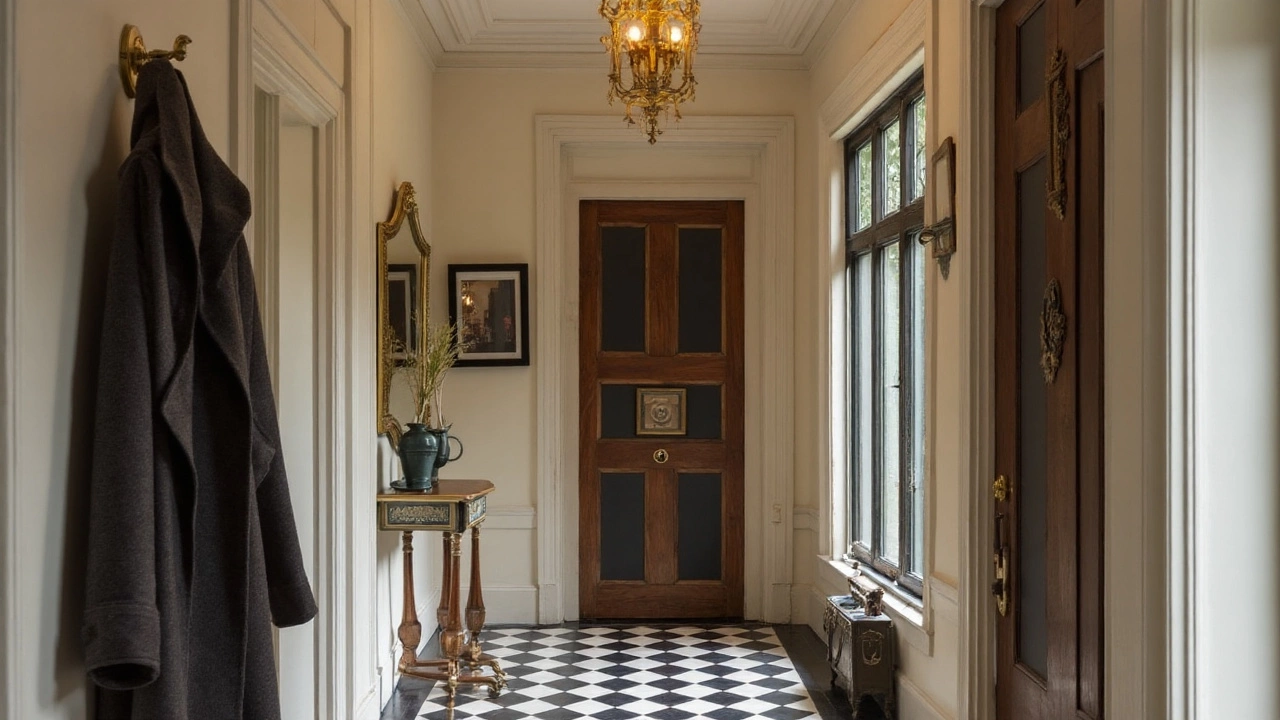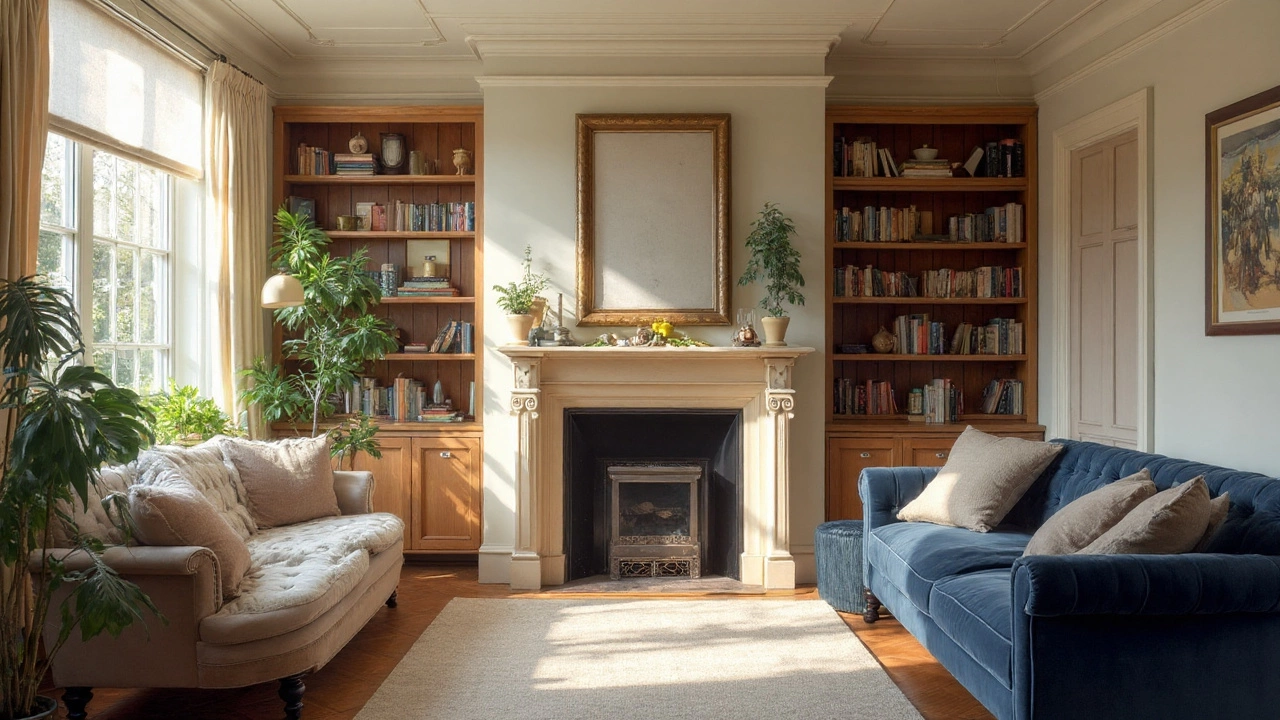If you’ve ever wondered why some living rooms look fresh year after year—while others scream a very specific decade and beg for a makeover—you're not alone. The secret isn't magic or endless redecorating. It's about choosing interior styles that simply don’t get stale. What's surprising? Some design decisions made over a century ago still look stylish today, while last year’s TikTok decorating hacks are already on clearance racks. So, what gives a space that coveted timeless feel, and is chasing it even possible if you’ve got a house full of trends?
Let’s get real—timeless style isn’t just about muted colors or expensive antiques. It's about tapping into elements proven to stay attractive, functional, and adaptable as tastes and years change. Do you end up with a museum? Not at all. You get a home that always feels right—never stuffy, never outdated. And you don't even need to toss your personality aside. In fact, the most comfortable, inviting rooms tend to have a mix of classic bones with a dash of “you.” Read on to unravel exactly what makes an interior style last forever, what to skip, what to embrace, and how to nail that never-gets-old look, no matter your space or budget.
The DNA of a Timeless Interior: What Really Lasts?
Ask ten designers what’s timeless, and you’ll get a lively debate. But zoom out, and some patterns stand out. Timeless interiors avoid extremes: no garish colors, no fleeting fads, and definitely no cheap, replace-in-a-year quality. Instead, think refined, unhurried, and logical—interiors that work in a London townhouse or a Brooklyn loft. Timeless interior design hinges on a few simple traits: balance, comfort, and honest materials.
Look at history. Black-and-white tiled floors made a splash in Victorian mansions but turn up in today's trendy restaurants. Subway tiles are as popular in 2025 as they were in New York subways in the early 1900s (fun fact: they were invented in 1904!). Genuine wood, stone, and leather are never out. Why? They age well—even better if they pick up a few scuffs. Their patina tells your home's story and only gets richer with years.
What about colors? White is a safe bet but add some depth—ivory, soft gray, or greige. Navy and deep green have a long shelf life, too. Neutrals let you swap out pillows, art, or rugs when you crave a switch up. Go for “quiet” colors as your base. Save the chartreuse for something you can easily swap out.
Shapes matter. The trick is moderation. Mid-century silhouettes (think: Eames, Saarinen tulip tables) and classic rolled-arm sofas blend with almost any décor, so you’re not forced to start from scratch with every new trend cycle. Symmetry brings a sense of calm, making spaces feel inviting and intentional.
Now for the finishes. Glossy is good in small doses, but natural textures—like matte woods, honed marble, or relaxed linen—ground a space. They appeal because they’re comfortable, tactile, and quietly luxurious. Timeless also means practical. Clutter, fussy trims, or oversized hardware feel dated not just visually but functionally. Streamlined cabinetry and understated hardware from 1920 look right at home in a house built in 2025.
Here’s an at-a-glance look at classic elements that just don’t quit:
| Timeless Element | Why It Lasts |
|---|---|
| Natural wood floors | Warm, durable; can be refinished for decades |
| White walls | Bright, clean; works with any accent color or furniture style |
| Subway tile | Clean lines; easily refreshed with new grout color |
| Neutral sofas | Easy to redecorate around; hide minor style changes |
| Symmetrical layouts | Feel calm, orderly; work in every era |
| Classic built-ins | Add storage and value year after year |
| Understated hardware | Never looks flashy or tired |
If you want extra proof, check out photos of homes that haven’t been updated in fifty years but still look cool. Odds are, they lean on these stalwarts—a sure-fire sign you won’t regret the investment.
Styles That Beat the Clock: Design Icons and Modern Mixes
Plenty of interior styles have had their 15 minutes of fame and fizzled out—shag carpets, excessive floral fabrics, inflatable furniture (remember those?). But a few approaches continuously get the stamp of approval from designers and real homeowners alike. If you spot something in a 1920 snapshot and it still looks inspired in a brand-new spread, you’re probably looking at an evergreen style.
The undisputed champ? Classic Traditional. This style pulls inspiration from 18th and 19th-century Europe—think symmetry, rich wood, wainscoting, and paned windows—but don’t mistake it for “fancy.” Traditional spaces feel calm, sturdy, and often a little nostalgic. They get away with antique sideboards and slipcovered sofas. Add some clean-lined artwork or a simple sisal rug, and the look feels current instead of stuffy.
Modern and mid-century modern are another safe bet. No, you don’t need a house full of Eames chairs or pricey Knoll pieces. But clean silhouettes, tapered legs, and functional layouts always look fresh. The real trick? Mix mid-century foundational pieces (maybe a credenza or coffee table) with more contemporary touches. It keeps the look from feeling like a time capsule.
Scandinavian style might seem like a Pinterest craze, but its roots run deep. Crisp whites, natural woods, cozy textures, and a less-is-more mindset let you add or subtract trends without ever needing a full redo. Japanese-inspired minimalism is similar—simple, not stark; warm, not cold; just a few well-chosen pieces and a heavy focus on comfort.
This doesn’t mean you should skip personality. Mix in vintage finds or global accents. Classic spaces aren’t blank slates—they’re there to amplify the interesting stuff you love. Got a quirky lamp from a flea market run or a rug picked up in Morocco? Those are your conversation starters and what make your room feel unique, not cookie-cutter.
Here are a few style combos that always seem to work—no matter your home’s age or location:
- Traditional base with modern art and lighting
- Modern architectural shapes with vintage textiles
- Classic subway tile kitchen with rustic wood beams
- Scandi furnishings with a bold, antique statement piece
- French-inspired upholstery mixed with clean metal finishes
Ever heard of the 80/20 rule in design? Keep about 80% of your space timeless and classic—bigger pieces like a sofa, table, or built-ins—and reserve 20% for trends. That way, if rattan lamps or curved chairs are out next year, you only need to swap a few things to stay current.
Need some inspiration? A survey by Houzz in 2023 reported that more than 60% of homeowners renovating their kitchens chose classic white cabinetry with timeless layouts, favoring longevity over passing color trends. And check out Model Townhouses in Manhattan built in the 1900s—they’re still commanding top-dollar thanks to their restrained details and adaptable bones. If you’re hunting for a style that won’t make you cringe in ten years, skip the theme rooms and build around foundational classics with peppered-in quirks.

How to Achieve Timeless Style: Your Step-by-Step Playbook
So, how do you actually get a timeless look without feeling totally overwhelmed or breaking the bank? It isn’t about hiring a big-name designer or buying museum pieces. Instead, use a few practical checks and balances—most people find it’s easier, and often cheaper, than chasing the latest trend.
Start by assessing your space. Take stock of your architecture. Older homes typically already have some timeless features—hardwood floors, crown molding, or classic casement windows. In a newer place, add character with simple upgrades: swap out builder-grade lighting for classic fixtures, install basic trim, or pick a neutral paint for walls. If you rent, focus on moveable pieces—pillows, art, or rugs in enduring patterns and colors.
Pick a simple palette focused on neutrals or soft, nature-inspired tones. Beige, cream, warm white, clay, or navy are safe bets. If you love color, use it for accents: a single statement chair, decorative pillows, or art. You’ll have plenty of room to play as seasons or moods change.
Choose furnishings with honest materials and basic shapes. Go for the best quality you can reasonably afford—it’ll pay off fast. Opt for solid wood over plastic, linen or cotton over synthetics. Classic upholstery like English roll-arm or Chesterfield sofas still work today, even though the designs date back centuries. Don't stress over matching sets; mixing woods, leathers, and metals actually makes your space feel more curated and less catalog-perfect.
Layer textures for comfort and interest. Linen curtains, wool throws, jute rugs—all soften the look and feel. Steer clear of heavy pattern combos that lock your room into a specific moment in time.
Keep architectural details understated. Shaker-style cabinetry, simple baseboards, and panel doors always look right. If you're splurging anywhere, make it on things you'll touch daily: a solid wood dining table, a great sofa, or high-quality hardware. These pieces work in any scheme and last a lifetime.
Finally, update with intention. Want to jump on a trend? Try it first with something small—throw pillows, a lamp, one bold print. See if it still sparks joy six months later. If not, changing it is no sweat.
Here’s a quick timeline-style guide to help keep your choices on track:
| Step | Action | What to Skip |
|---|---|---|
| 1 | Embrace balanced layouts | Asymmetrical, chaotic furniture arrangements |
| 2 | Choose classic colors | Highlighter brights, radioactive neons |
| 3 | Invest in quality materials | Plastic, flat-pack laminate, faux finishes |
| 4 | Add simple architectural details | Swirly trim, over-complicated moldings |
| 5 | Mix textures sparingly | Busy, clashing patterns or too much gloss |
| 6 | Bring in personal accent pieces | Theme décor or novelty items |
One last tip: don’t rush. Timeless homes evolve. If you’re missing the “collected over time” vibe, hunt estate sales, auctions, or even your family attic. The best timeless rooms look like they came together naturally, not overnight.
There’s a reason people still covet those brownstone parlors or Parisian flats: they’ve mastered the art of not trying too hard. The right mix of classic bones, restraint with trends, and a dash of personal flair will always look good, no matter what year it is. If you’re after a home you’ll love this year, next year, and long after, you really can’t go wrong with the timeless route—and, honestly, isn’t that the dream?
